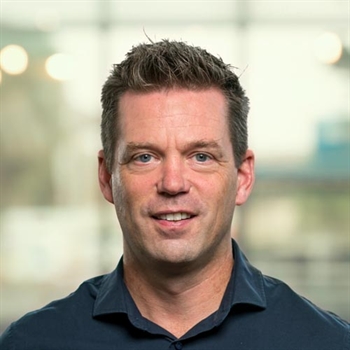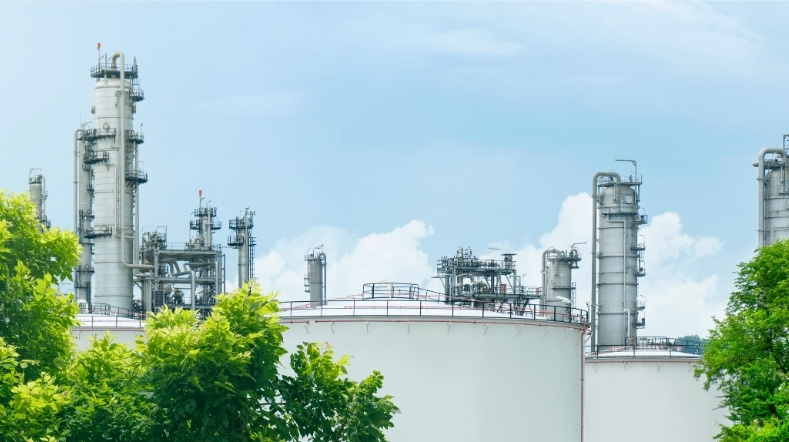
BASF and TNO collaborate on Decision Support for Safe and Sustainable by Design
Safe and Sustainable by Design (SSbD) thinking is well-established in the chemical industry, especially at BASF. However, SSbD screening is now more formalised and moved to earlier innovation phases, requiring companies to develop tools to balance risks and benefits effectively. BASF, a frontrunner in SSbD, is proactively developing a comprehensive Decision Support System (DSS) in close collaboration with TNO.
As one of the oldest and largest chemical companies in the world, BASF has a substantial responsibility to design and develop products that are safe and sustainable. Wibke Lölsberg, Corporate Sustainability Strategy, elaborates: 'First of all, as a company, we have a responsibility towards society to get it right.'
'As a supplier of base materials to numerous value chains—90 per cent of which are based on chemicals—we must ensure the development of safe and sustainable chemicals and minimise our corporate footprint. But we also have to be safe and sustainable from an economic perspective. If we don't manage this transformation correctly—especially as Europe is a frontrunner—we would feel the economic impact immediately.'
Webinar: The Future of chemicals is Safe and Sustainable by Design
Join our webinar on October 1st, hosted by TNO and VNCI. Learn about TNO's innovative approach, VNCI's vision, and practical insights from companies implementing SSbD.
Stakes are high
Wouter Fransman, Principal Investigator at TNO, agrees with Wibke Lölsberg on the high stakes involved. 'Chemical companies, in particular, are under scrutiny regarding safety and sustainability. In today's climate of growing environmental concerns, any misstep can quickly escalate on social media, causing significant reputational and economic damage. At TNO, we see SSbD as a chance to design innovative chemicals and materials that address societal challenges, like the energy transition, while ensuring no harm to humans or the environment. We assist industry partners in achieving a balance between functionality, safety, and sustainability by developing an integrated SSbD approach during the early phases of product innovation.'
SSbD is part of BASF’s history
At BASF, the development of SSbD principles happened gradually and dates back to the very beginning of the company. Wibke Lölsberg: 'SSbD requires considering different dimensions, including occupational safety, consumer safety, environmental safety, and overall sustainability, assessed through LCA-based methods.'
'The need for occupational safety was so evident to BASF that we focused on it shortly after the company's founding, and we have been performing toxicological investigations since 1908. Over time, we have integrated the other dimensions, with the economic aspect of functionality, cost, and product value always being a constant consideration. Mandatory safety checks were integrated into early stages of product innovation with the introduction of R&D project management by the PhaseGate process in 2004.'
'This management tool remains the cornerstone of our SSbD implementation in R&D. To assess the sustainability benefits and risks of our portfolios, we introduced the triple-S system in 2012. We categorise our products, balancing the three dimensions of sustainability: environment, society, and economy.'

'We need a step-by-step approach to ensure our transformation is sustainable in every sense, including economically.'
Reducing risks with SSbD
SSbD complements regulations, helping companies identify potential issues at an early stage. Wendel Wohlleben, Senior Principal Scientist at BASF, explains: 'While safety issues can still arise, SSbD processes reduce this likelihood.' Wohlleben cites the carbon nanotube (CNT) case to illustrate SSbD's benefits: 'Twenty years ago, many companies entered the CNT market. Although we didn't call it SSbD then, we followed its principles. Due to health concerns over persistent long fibers, we chose not to develop CNTs, unlike many competitors. This decision, based on design principles, reflects the essence of SSbD.'
BASF's diverse portfolio and global market make applying generic SSbD guidelines challenging. Design principles and regulatory requirements vary by sector, with each division focusing on relevant 'hot topics.' Wibke Lölsberg notes: 'The challenge is that some customer industries demand sustainable product attributes, while others do not. This discrepancy also exists regionally, with some areas prioritising sustainability more. We need a step-by-step approach to ensure our transformation is sustainable in every sense, including economically.'
Paper Safe and Sustainable by Design
Read all about the topic of safe and sustainable chemicals in our paper. 'The future of chemicals is safe and sustainable by design.'
Too detailed and data-driven
In an attempt to structure and formalise SSbD principles, the European Commission has published a draft for an SSbD framework. BASF conducted two test cases in dialogue with the European Commission's Joint Research Centre (JRC) to investigate the feasibility of the SSbD framework on different R&I activities. Wibke Lölsberg: 'We have reviewed the newly released Methodological Guidance documents by JRC and are concerned that the SSbD assessment is currently too detailed and data-driven. Early-stage innovation often has limited knowledge and data, as there may not be enough material or tests available. The current framework is highly data-driven and attempts to quantify everything. We believe a more practical approach is needed, especially for the early stages of innovation.'
Developing a DSS with TNO
To help industries balance risks and benefits early on, TNO is developing a Decision Support System (DSS) for SSbD. Wouter Fransman states: 'Decision support systems are crucial for enabling many scientists to apply SSbD principles effectively. The assessment at very early innovation stages will not be done by sustainability professionals but needs to be infused into the design principles of every R&D project. Researchers and project managers require consistent guidance and efficient screening tools that do not necessitate consultation and data gathering from numerous other units. A well-designed Decision Support System can be a valuable tool for this purpose.'

'Decision support systems are crucial for enabling many scientists to apply SSbD principles effectively.'
BASF-TNO collaboration on DSS for SSbD
BASF and TNO, who both contributed to the EU-funded HARMLESS project, collaborate on developing a DSS for SSbD purposes. Wendel Wohlleben explains: 'While we have learned a lot from the HARMLESS project, that was aimed at developing a DSS for complex nanomaterials, we must now expand the scope to include a wider range of materials for BASF. This is the goal of our partnership with TNO. We appreciate TNO's solution-oriented approach, intrinsic motivation, and expertise, as documented in their recent SSbD white paper. Their pragmatic approach and multidisciplinary knowledge set them apart from more specialised consultancy firms.'
Final thoughts on SSbD’s future
To conclude, what should the future look like for safe and sustainable chemicals, and how do we get there?
Wendel Wohlleben says: 'Implementing SSbD and considering a product’s entire life cycle requires more collaboration and communication across the value chain, from suppliers to customers. Every part of the value chain must embrace SSbD. Additionally, SSbD needs to be fit for purpose. Incremental innovations shouldn't require excessive SSbD considerations, while radical innovations should. Current schemes don’t fully address this, but industry acceptance depends on it.'
Wibke Lölsberg adds: 'Innovators using SSbD processes will access markets faster, avoid regrettable substitutions, and overcome the lack of harmonisation in safety and sustainability analysis. SSbD represents a cultural shift in innovation, broadening our considerations. With climate change acknowledged, we must integrate this mindset into daily practices.'
Wouter Fransman agrees: 'BASF is a great example of SSbD's benefits, but it's not limited to large corporates. Smaller companies can also apply SSbD design principles. I encourage them to learn about the SSbD framework and seek collaboration for implementation. It’s time for action.'
The future of chemicals that are safe and sustainable by design
TNO is encouraging the chemical industry to adopt Safe and Sustainable by Design (SSbD) methods and is developing a Decision Support approach for companies.
Get inspired
Over 300,000 workers in the Netherlands experience heat stress at work


TNO Announces the launch of ObjectivEye


Prospective Life Cycle Assessments for future-proof product design


Knowledge advantage in SSbD offers opportunities for Dutch chemical companies


The future of chemicals is Safe and Sustainable by Design




